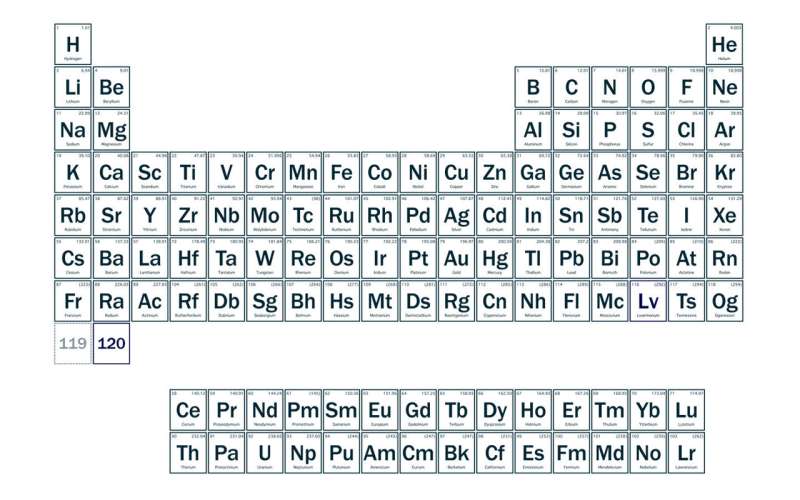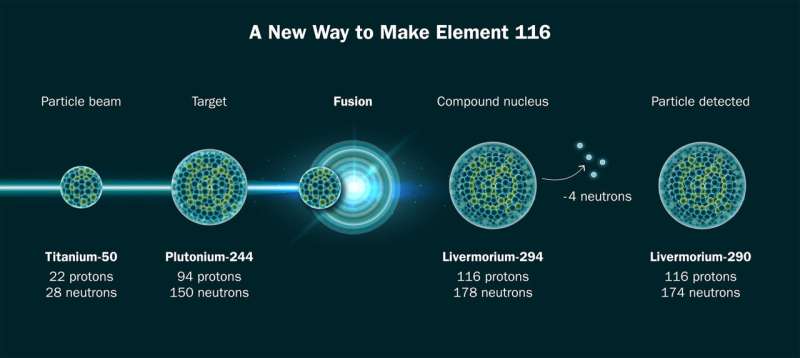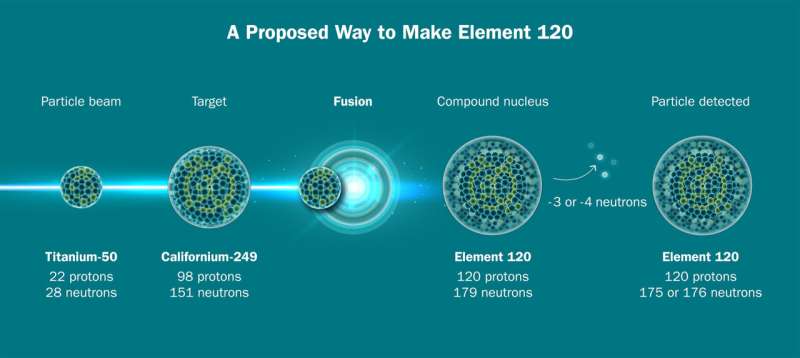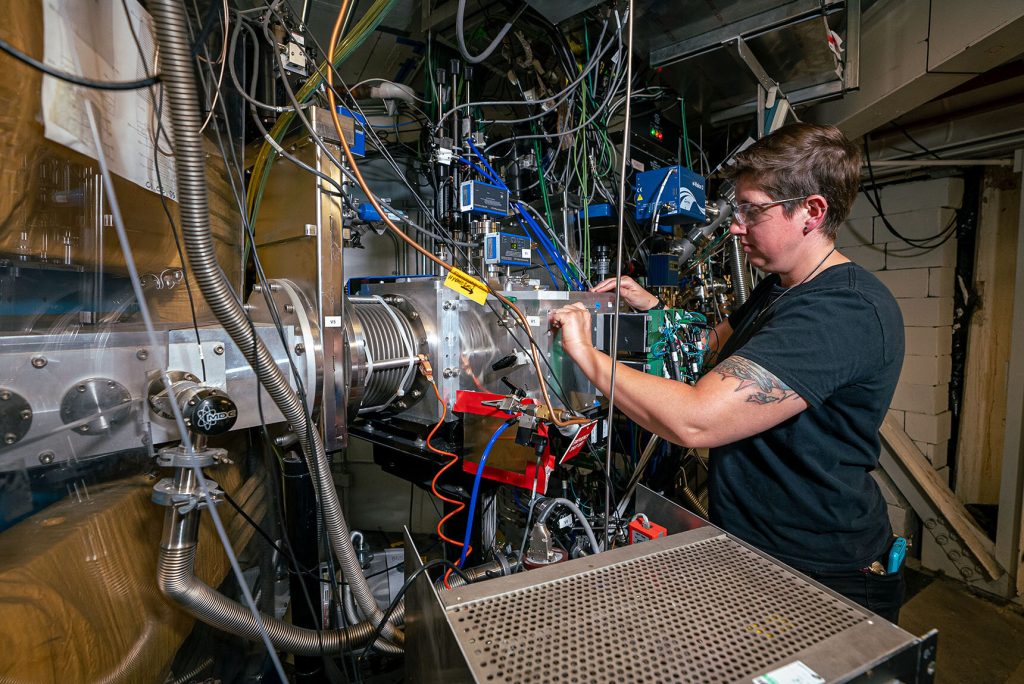Scientist Jacqueline Gates in the Berkeley Gas-Filled Separator used to separate atoms of livermorium, element 116. Photo by Marilyn Sargent/Berkeley Lab
Scientists at the U.S. Department of Energy’s Lawrence Berkeley National Laboratory (Berkeley Lab) 16 Discoveries One of 118 known elements. Now, researchers have completed a crucial first step towards creating yet another element: element number 120.
Today, an international team of researchers led by Berkeley Lab’s Heavy Elements Group Superheavy elements Element 116 was produced using a titanium beam. This is a groundbreaking achievement that will be an important stepping stone toward the production of element 120. This achievement was announced today. Nuclear Structure 2024 conferences; scientific papers will be published in online repositories arXiv and submitted to the journal Physics Review Letter.
“This reaction has never been demonstrated before, so it was essential that we prove it was possible before embarking on our attempt to make element 120,” said Berkeley Lab nuclear scientist Jacqueline Gates, who led the work. “Creating a new element is an extremely rare feat, and it’s exciting to be part of this process and see such promising avenues for the future.”
The team ran the lab’s heavy ion accelerator, the 88-inch Cyclotron, for 22 days to produce two atoms of livermorium, element number 116. Producing atoms of element number 120 is even rarer, but judging by the speed at which 116 was produced, it’s a reaction that scientists could explore for years.
“We wanted nature to be kind to us, and nature was kind to us,” said Rainer Kruecken, head of Berkeley Lab’s nuclear sciences division. “I would say it would take about 10 times longer to make 120 than it would take to make 116. It’s not easy, but it’s now doable.”
If discovered, element number 120 would be the heaviest atom and would be located in row 8 of the periodic table. The element would sit on the shore of the “island of stability,” a theoretical group of superheavy elements with unique properties.
While the superheavy elements discovered so far decay almost instantly, the right combination of protons and neutrons can produce more stable nuclei that last longer, giving researchers more opportunities to study them. Investigating elements in extreme states can provide insight into the behavior of atoms, test models of nuclear physics, and illuminate the limits of atomic nuclei.

An expanded periodic table shows where researchers would classify elements 119 and 120 if they were discovered. Credit: Marilyn Sargent/Berkeley Lab
Creating superheavy elements
In theory, making a superheavy element is simple: collide two lighter elements together, combining as many protons as needed into the final atom. It’s basic math: 1+2=3.
Of course, in practice that’s extremely difficult: it would take trillions of interactions for two atoms to successfully fuse together, and it would be impossible to know which elements could be fused together in a reasonable way. Particle Beam Or target.
Researchers choose specific isotopes (variants of elements with the same number of protons but a different number of neutrons) for their beams and targets. The heaviest practical target is an isotope called californium-249, which has 98 protons (heavier targets such as fermium, which has 100 protons, would decay too quickly). This means that if they were trying to make element 120, researchers couldn’t use a beam of calcium-48, which has 20 protons. Instead, they’d need a beam of an atom with 22 protons, namely titanium, which isn’t often used to create superheavy elements.
Over the course of several weeks, experts at the 88-inch cyclotron set out to see if they could produce a powerful enough beam of the titanium-50 isotope and use it to produce element 116, the heaviest element ever produced at Berkeley Lab.
Until now, elements numbers 114 to 118 have only been produced with calcium-48 beams that have a special or “magic” configuration of neutrons and protons that fuse with target nuclei to produce superheavy elements. An open question in the field has been whether superheavy elements can be produced near the stability island using “non-magic” beams such as titanium-50.
“It was an important first step to try to make something a little simpler than the new elements to see how changing from a calcium beam to a titanium beam changes the production rates of these elements,” said Jennifer Pore, a scientist in Berkeley Lab’s Heavy Elements Group.
“When we try to make these extremely rare elements, we are standing at the edge of human knowledge and understanding – there is no guarantee that the physics will work the way we expect them to. Making element 116 with titanium proves that this manufacturing method works and can now plan the search for element 120.”
The plan to use Berkeley Lab’s unique facilities to create superheavy elements was approved by the Nuclear Science Advisory Committee. Nuclear Science Long-Term Plan 2023.

To create element 116, the researchers fused isotopes of titanium and plutonium. Photo by Jenny Nass/Berkeley Lab
A feat of engineering
Creating a strong enough beam of titanium isotope is no easy feat. The process starts with a special chunk of titanium-50, a rare titanium isotope that makes up about 5% of all titanium in the earth. This piece of metal is placed in an oven about the size of the last knuckle of your pinky finger. The oven heats it to nearly 3,000 degrees Fahrenheit until it starts to vaporize the metal, like gases emanating from dry ice.
All of this happens in an ion source called VENUS, a complex superconducting magnet that acts like a bottle to contain the plasma. Free electrons spiral through the plasma and are bombarded with microwaves, gaining energy and knocking off 12 of the titanium’s 22 electrons. The charged titanium is then steered by magnets and accelerated in an 88-inch cyclotron.
“We knew that high-current titanium beams would be tricky to work with because titanium reacts with many gases, affecting the stability of the ion source and the beam,” said Damon Todd, an accelerator physicist at Berkeley Lab and part of the ion source team. “Our new induction oven allows us to keep the temperature constant for several days by keeping the titanium power constant and precisely irradiating the VENUS plasma to avoid stability issues. We are very pleased with the beam production.”
Every second, about six trillion titanium ions bombard a target (plutonium to make 116, californium to make 120). The target is thinner than paper and rotates to disperse heat. Accelerator operators adjust the beam so it has just the right amount of energy: too little energy and the isotopes won’t fuse into heavier elements. Too much energy and the titanium blows away the target’s nuclei.
Once the rare superheavy elements are formed, they are separated from the rest of the particle debris by magnets in the Berkeley Gas-Filled Separator (BGS), which sends them to a highly sensitive silicon detector called the SHREC (Superheavy Element Recoil Detector), which can capture information such as energy, position and time that allows researchers to identify which heavy elements decay into lighter particles.
“We’re pretty confident that we’re observing element 116 and its daughter particle,” Gates said. “The chances of this being a statistical fluke are about one in a trillion.”

To make element 120, researchers hope to fuse isotopes of titanium and californium. Photo by Jenny Nass/Berkeley Lab
120 Plans
There’s still work to be done before researchers can try to create element 120. Experts at the 88-inch cyclotron continue to prepare the machine to target californium-249, and collaborators at Oak Ridge National Laboratory need to incorporate about 45 milligrams of californium into the target.
“We’ve proven that we have the facilities to carry out this project and that it is physically feasible,” Kruken said. “Once we have the targets, shielding and engineering controls in place, we’re ready to tackle this challenging experiment.”
No timeline has been set yet, but researchers could begin the effort as soon as 2025. Once underway, it could take years for even a few atoms of element 120 to show up, if at all.
“We want to understand the limits of the atom and the limits of the periodic table,” Gates said. “The superheavy elements we know today won’t live long enough to have any practical use, but who knows what the future holds. It could be a better understanding of how the nucleus works, or it could be something more.”
The research involves researchers from Berkeley Lab, Lund University, Argonne National Laboratory, Lawrence Livermore National Laboratory, San Jose State University, University of Strasbourg, University of Liverpool, Oregon State University, Texas A&M University, University of California, Berkeley, Oak Ridge National Laboratory, University of Manchester, ETH Zurich, and the Paul Scherrer Institute.
Provided by
Lawrence Berkeley National Laboratory
Quote: New method of making element 116 opens door to heavier atoms (July 23, 2024) Retrieved July 24, 2024 from https://phys.org/news/2024-07-element-door-heavier-atoms.html
This document is subject to copyright. It may not be reproduced without written permission, except for fair dealing for the purposes of personal study or research. The content is provided for informational purposes only.


